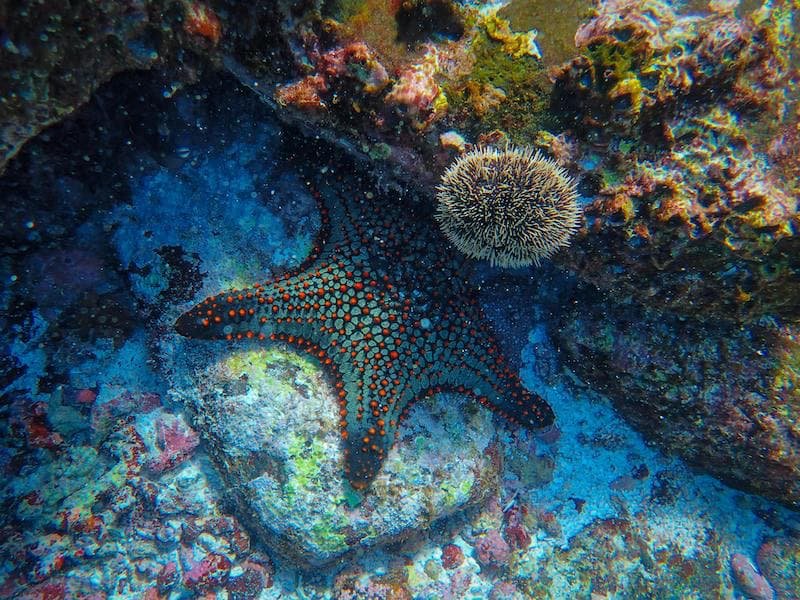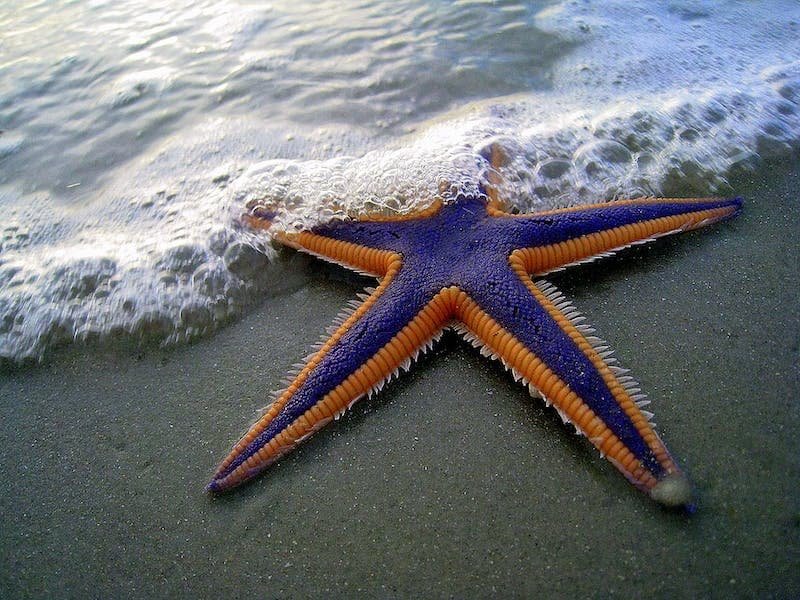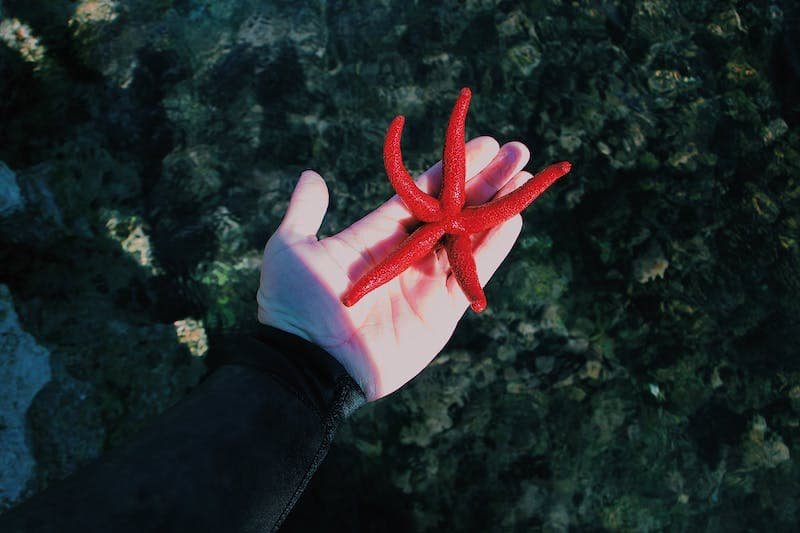
 Olivia Møller
Freediver - Activist - Explorer
Olivia Møller
Freediver - Activist - Explorer

 Olivia Møller
Freediver - Activist - Explorer
Olivia Møller
Freediver - Activist - Explorer
In the vast expanse of our oceans the starfish emerges as a fascinating creature, captivating the imaginations of those who venture into the aquatic realm. These enigmatic beings, also known as sea stars, play a crucial role in maintaining the delicate balance of marine ecosystems. Yet, despite their intriguing nature, there is a silent threat that looms over them — the well-intentioned touch of human hands.
Starfish possess a unique anatomy that sets them apart in the marine world. Their distinctive radial symmetry and array of tube feet make them both captivating and fragile. Beneath their mesmerizing exteriors lies a vulnerability that is often overlooked by admirers. A thin layer of mucus coats their bodies, serving as a protective shield against bacteria and other potential threats.
When we touch starfish with dry hands or apply undue pressure, we disturb this protective layer, leaving them susceptible to infections and diseases. Research conducted by marine biologists highlights the significance of this mucus layer in the overall health and well-being of starfish populations. Disturbing this delicate balance can have far-reaching consequences, affecting not only individual starfish but the entire ecosystems they inhabit.

At the heart of a starfish's physiology is its water vascular system — a complex network of fluid-filled canals that powers its tube feet and facilitates essential functions such as locomotion and feeding. Each tube foot is an intricate hydraulic structure, allowing the starfish to navigate its surroundings and capture prey with remarkable precision.
The act of touching starfish, especially if done recklessly, can disrupt this delicate hydraulic system. The repercussions extend beyond the immediate physical harm, potentially impairing the starfish's ability to forage for food and escape from predators. As we marvel at these creatures, it is paramount to recognize and respect the intricacies of their biology.

Beyond their aesthetic appeal, starfish play a pivotal role in maintaining the ecological balance of marine environments. Their feeding habits, often involving the consumption of mollusks and other invertebrates, prevent unchecked population growth of certain species. In doing so, starfish contribute to the overall health and diversity of their habitats.
Research conducted in the Pacific Northwest, where the iconic ochre sea star (Pisaster ochraceus) resides, reveals the cascading effects of starfish predation on mussel beds. These charismatic sea stars control mussel populations, preventing them from dominating the rocky shores. This, in turn, creates space for a diverse array of organisms to thrive, creating a delicate yet resilient web of life.

In recent years, concerns about declining starfish populations have prompted scientists and conservationists to investigate the underlying causes. While factors like climate change and disease have been identified as contributors, the impact of human interaction cannot be understated. Researchers emphasize the need for responsible tourism and educational initiatives to minimize the negative effects of human touch on starfish and other marine life.
Conservation efforts must extend beyond the immediate consequences of touching starfish. A holistic approach involves raising awareness about the interconnectedness of marine ecosystems and the importance of preserving the intricate relationships that define them. The ripple effect of such initiatives can lead to positive changes, fostering a deeper appreciation for the aquatic realm and inspiring collective action to protect it.

Tourism, with its potential to educate and inspire, also poses a threat to marine life when conducted without due consideration for the environment. In popular coastal destinations, where starfish often become unwitting attractions, a call for responsible tourism is crucial. Local authorities, tour operators, and visitors alike must prioritize the well-being of marine ecosystems, ensuring that the allure of starfish does not come at the cost of their survival.
Research conducted in marine reserves underscores the positive impact of responsible tourism on starfish populations. Areas where guidelines are in place to limit human interaction witness healthier and more abundant starfish communities. This suggests that simple measures, such as prohibiting the touching of starfish and providing educational materials to visitors, can contribute significantly to the conservation of these fascinating creatures.

Tide pools, those miniature ecosystems revealed at low tide, offer a glimpse into the intricate dance of life along the coastline. Here, starfish are often found near other marine inhabitants, creating a delicate tapestry of biodiversity. As we tread carefully around these natural wonders, we must recognize our role as custodians rather than intruders.
Scientific observations in tide pool ecosystems emphasize the importance of preserving the balance between predator and prey. Disturbances caused by excessive human touch disrupt this balance, potentially leading to a cascade of ecological consequences. By exercising restraint and fostering a culture of respect for these habitats, we can ensure that tide pools remain vibrant showcases of marine life for generations to come.
In an era marked by environmental challenges, the fate of starfish rests in our hands. The urgency to protect these creatures goes beyond individual responsibility; it requires collective action on a global scale. Conservation organizations, researchers, and policymakers must collaborate to implement measures that safeguard not only starfish but the entire tapestry of life woven into our oceans.
Initiatives aimed at mitigating climate change, reducing pollution, and establishing marine protected areas contribute to the overarching goal of preserving marine ecosystems. As we strive for a sustainable future, the resilience of starfish becomes a barometer of our success in nurturing the intricate relationships that define the aquatic realm.

In the ocean, where currents converge and life teems in myriad forms, starfish stand as ambassadors of a delicate yet resilient ecosystem. Their existence is intertwined with the health of our oceans, and the responsibility to protect them lies with each one of us. As we marvel at the beauty of starfish, let us be mindful of the impact our actions can have on their survival.
By refraining from the impulse to touch and embracing a philosophy of responsible tourism, we can ensure that future generations inherit a world where starfish continue to play their vital role in the symphony of life beneath the waves. The journey towards conservation is not only a commitment to starfish but a pledge to safeguard the rich tapestry of marine life that defines our planet's watery expanses.